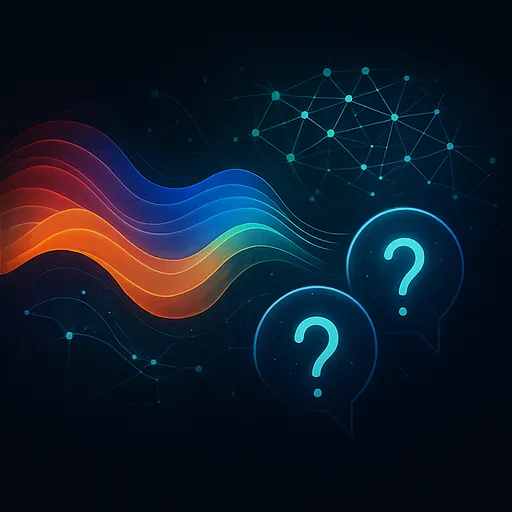
Question Answering & Knowledge Retrieval
Question answering (QA) systems enable users to obtain specific information by asking natural language questions. Early QA relied on keyword matching and heuristics to retrieve snippets from databases. Today, AI‑powered QA combines information retrieval with deep language understanding. Classification and ranking algorithms evaluate potential answers based on relevance and confidence. Regression models estimate answer quality scores, and clustering techniques group similar queries to improve efficiency. Open‑domain QA aims to answer any question by searching large corpora, while closed‑domain QA focuses on specialised domains like medical or legal information.
The backbone of QA is retrieval. Traditional methods use term frequency–inverse document frequency (TF‑IDF) and BM25 to score documents. Neural retrieval models encode questions and documents into vector space using transformer encoders and retrieve via similarity search. On top of retrieval sits the reader or generator. Extractive models identify the span of text that answers the question, whereas generative models synthesise an answer by conditioning on both question and context. Retrieval‑Augmented Generation (RAG) combines these approaches: it retrieves relevant passages and feeds them into a language model that constructs a response. This hybrid strategy balances factual grounding with fluent language.
QA systems underpin many applications. Search engines answer factual queries directly on the results page. Virtual assistants respond to commands like “What’s the weather tomorrow?” or “How tall is the Eiffel Tower?” Customer support bots field product questions and link to documentation. In education, QA aids in tutoring by answering students’ queries and explaining concepts. In knowledge management, QA surfaces insights from corporate wikis and research papers. For each application, the system must handle ambiguity, synonyms and variations in phrasing. Tools like semantic parsing and paraphrase detection help normalise questions before searching.
Despite impressive progress, QA remains challenging. Language models can hallucinate—generate plausible but incorrect answers—especially when training data is limited or biased. Retrieval errors propagate to the generator. Systems may struggle with multi‑hop reasoning that requires chaining information from multiple sources. They also risk exposing confidential information if knowledge bases are not carefully curated. To mitigate these risks, QA systems should provide citations or indicate uncertainty when unsure. Human oversight and continuous evaluation with diverse benchmarks help ensure accuracy and fairness. As QA systems become ubiquitous, responsible design will be crucial to maintain trust.
Back to articles